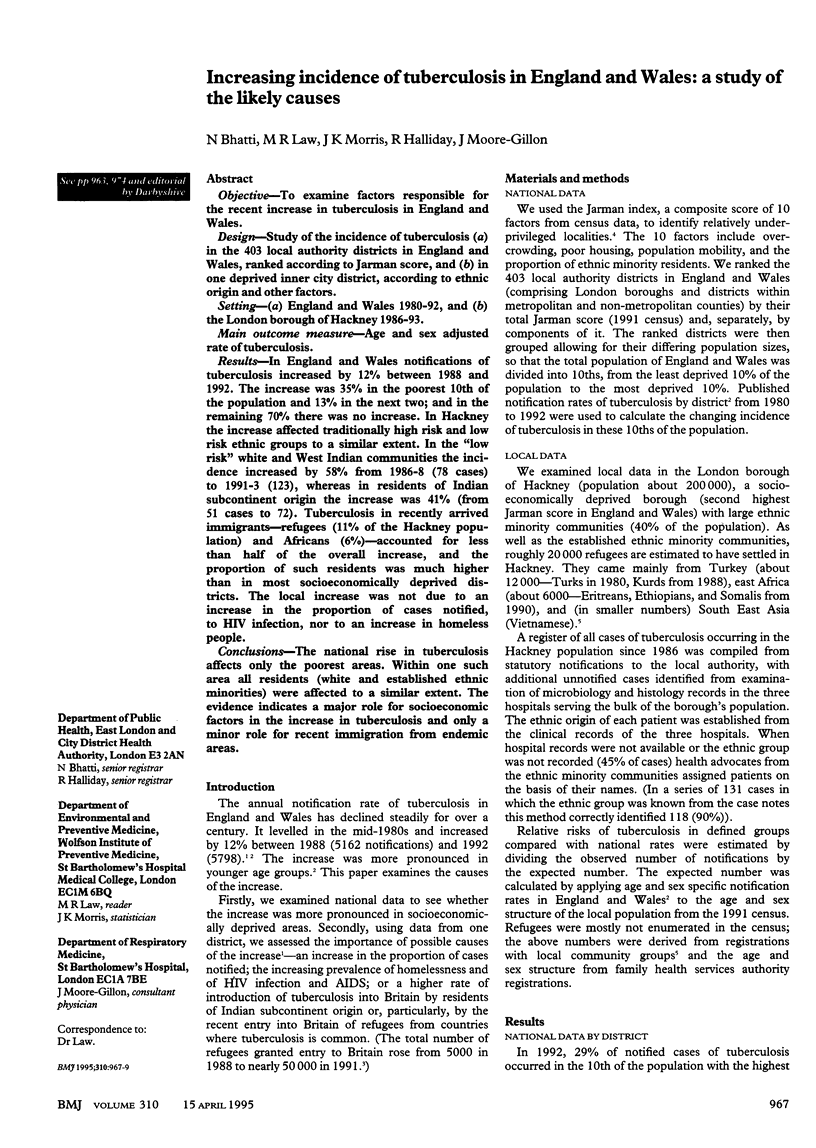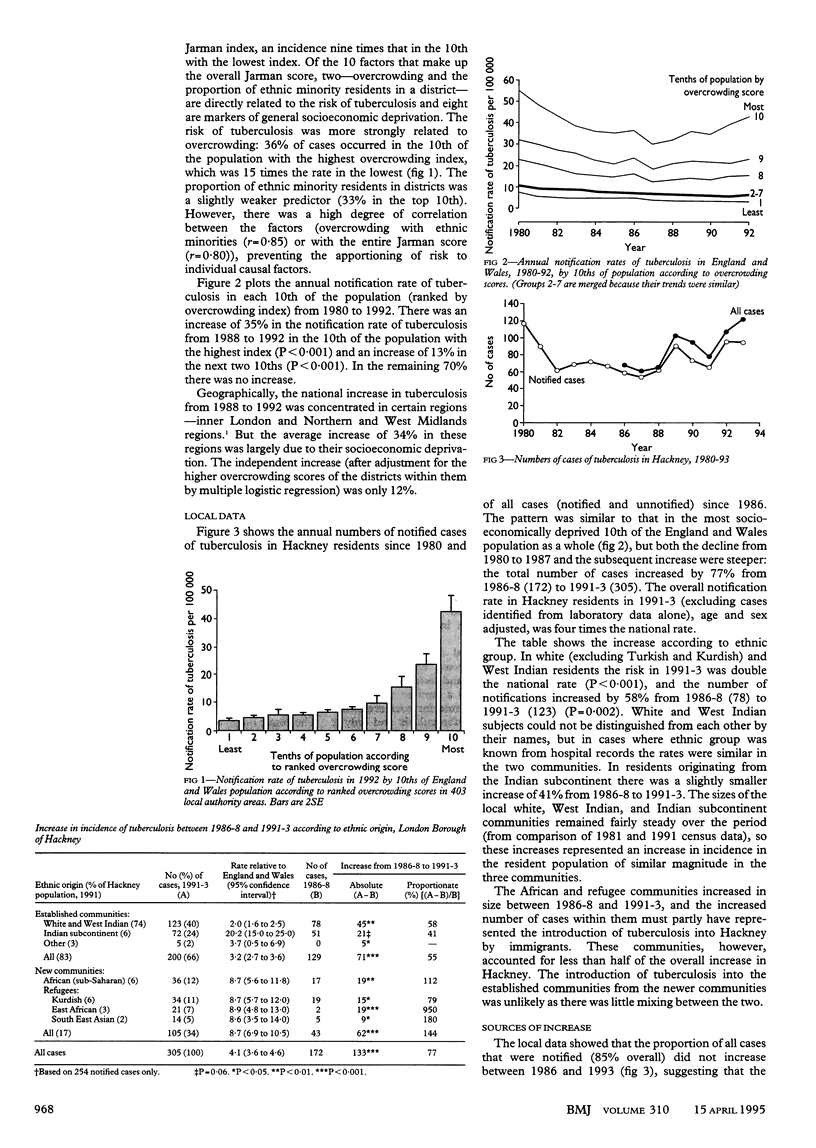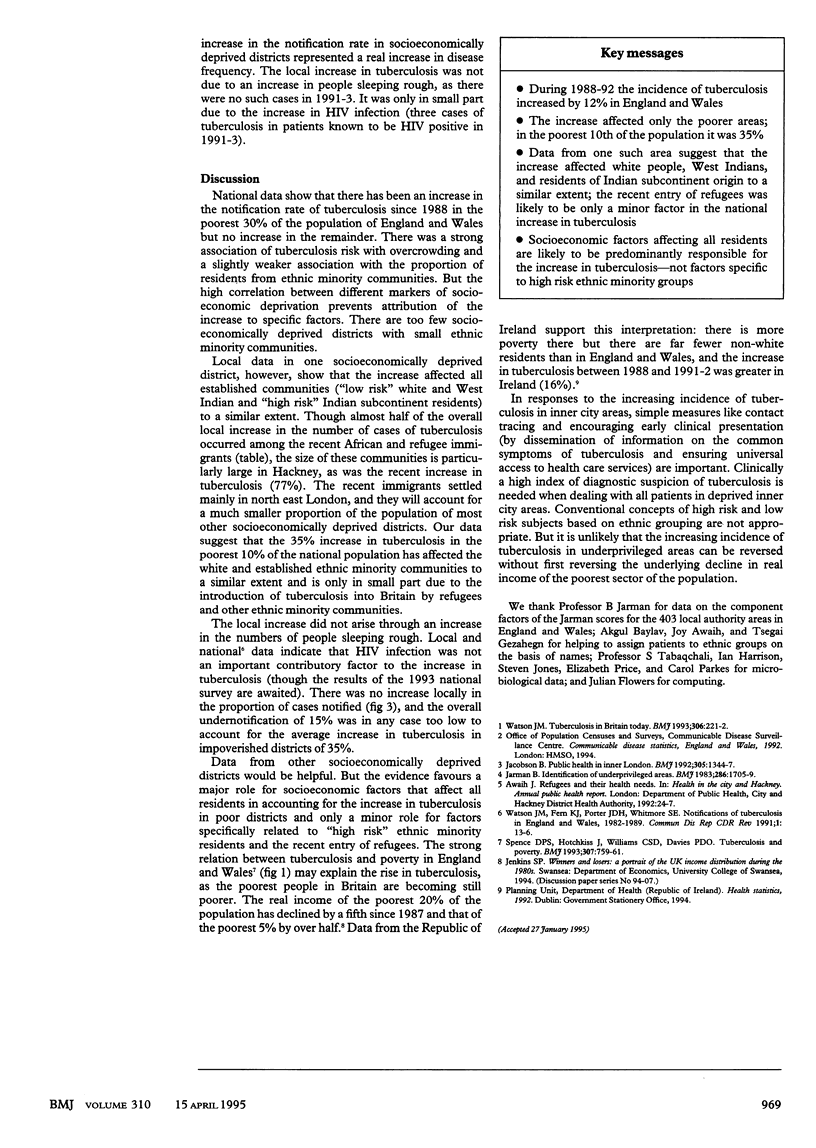Abstract
OBJECTIVE--To examine factors responsible for the recent increase in tuberculosis in England and Wales. DESIGN--Study of the incidence of tuberculosis (a) in the 403 local authority districts in England and Wales, ranked according to Jarman score, and (b) in one deprived inner city district, according to ethnic origin and other factors. SETTING--(a) England and Wales 1980-92, and (b) the London borough of Hackney 1986-93. MAIN OUTCOME MEASURE--Age and sex adjusted rate of tuberculosis. RESULTS--In England and Wales notifications of tuberculosis increased by 12% between 1988 and 1992. The increase was 35% in the poorest 10th of the population and 13% in the next two; and in the remaining 70% there was no increase. In Hackney the increase affected traditionally high risk and low risk ethnic groups to a similar extent. In the "low risk" white and West Indian communities the incidence increased by 58% from 1986-8 (78 cases) to 1991-3 (123), whereas in residents of Indian subcontinent origin the increase was 41% (from 51 cases to 72). Tuberculosis in recently arrived immigrants--refugees (11% of the Hackney population) and Africans (6%)--accounted for less than half of the overall increase, and the proportion of such residents was much higher than in most socioeconomically deprived districts. The local increase was not due to an increase in the proportion of cases notified, to HIV infection, nor to an increase in homeless people. CONCLUSIONS--The national rise in tuberculosis affects only the poorest areas. Within one such area all residents (white and established ethnic minorities) were affected to a similar extent. The evidence indicates a major role for socioeconomic factors in the increase in tuberculosis and only a minor role for recent immigration from endemic areas.
Full text
PDF


Selected References
These references are in PubMed. This may not be the complete list of references from this article.
- Jacobson B. Public health in inner London. BMJ. 1992 Nov 28;305(6865):1344–1347. doi: 10.1136/bmj.305.6865.1344. [DOI] [PMC free article] [PubMed] [Google Scholar]
- Jarman B. Identification of underprivileged areas. Br Med J (Clin Res Ed) 1983 May 28;286(6379):1705–1709. doi: 10.1136/bmj.286.6379.1705. [DOI] [PMC free article] [PubMed] [Google Scholar]
- Spence D. P., Hotchkiss J., Williams C. S., Davies P. D. Tuberculosis and poverty. BMJ. 1993 Sep 25;307(6907):759–761. doi: 10.1136/bmj.307.6907.759. [DOI] [PMC free article] [PubMed] [Google Scholar]
- Watson J. M. Tuberculosis in Britain today. BMJ. 1993 Jan 23;306(6872):221–222. doi: 10.1136/bmj.306.6872.221. [DOI] [PMC free article] [PubMed] [Google Scholar]


